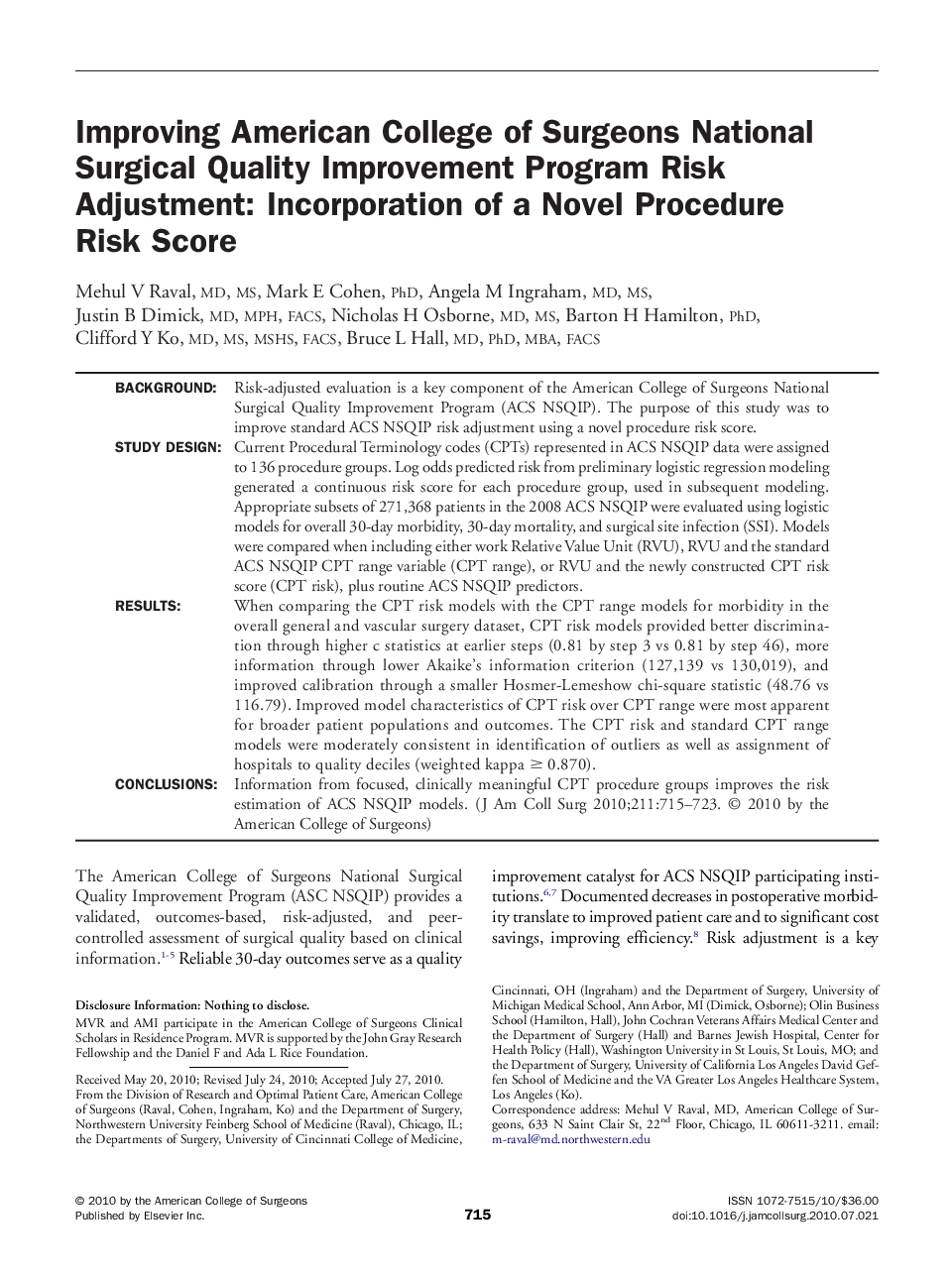| کد مقاله | کد نشریه | سال انتشار | مقاله انگلیسی | نسخه تمام متن |
|---|---|---|---|---|
| 4292530 | 1612278 | 2010 | 9 صفحه PDF | دانلود رایگان |

BackgroundRisk-adjusted evaluation is a key component of the American College of Surgeons National Surgical Quality Improvement Program (ACS NSQIP). The purpose of this study was to improve standard ACS NSQIP risk adjustment using a novel procedure risk score.Study DesignCurrent Procedural Terminology codes (CPTs) represented in ACS NSQIP data were assigned to 136 procedure groups. Log odds predicted risk from preliminary logistic regression modeling generated a continuous risk score for each procedure group, used in subsequent modeling. Appropriate subsets of 271,368 patients in the 2008 ACS NSQIP were evaluated using logistic models for overall 30-day morbidity, 30-day mortality, and surgical site infection (SSI). Models were compared when including either work Relative Value Unit (RVU), RVU and the standard ACS NSQIP CPT range variable (CPT range), or RVU and the newly constructed CPT risk score (CPT risk), plus routine ACS NSQIP predictors.ResultsWhen comparing the CPT risk models with the CPT range models for morbidity in the overall general and vascular surgery dataset, CPT risk models provided better discrimination through higher c statistics at earlier steps (0.81 by step 3 vs 0.81 by step 46), more information through lower Akaike's information criterion (127,139 vs 130,019), and improved calibration through a smaller Hosmer-Lemeshow chi-square statistic (48.76 vs 116.79). Improved model characteristics of CPT risk over CPT range were most apparent for broader patient populations and outcomes. The CPT risk and standard CPT range models were moderately consistent in identification of outliers as well as assignment of hospitals to quality deciles (weighted kappa ≥ 0.870).ConclusionsInformation from focused, clinically meaningful CPT procedure groups improves the risk estimation of ACS NSQIP models.
Journal: Journal of the American College of Surgeons - Volume 211, Issue 6, December 2010, Pages 715–723